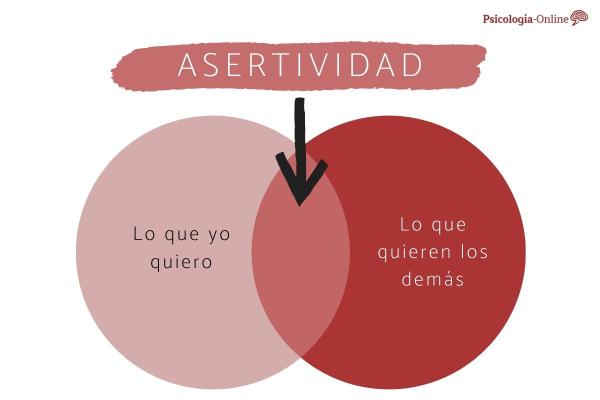Assertiveness is a useful communication tool, its application depends on the context and therefore it is not appropriate to be assertive in all situations. You must keep in mind that the sudden use of assertiveness may be perceived as an act of aggression by others.
Furthermore, even when assertive communication styles are used appropriately, there is no guarantee of success. In this PsychologyFor article, we will talk about assertive communication: examples and techniques to develop it.
Some techniques to develop assertive communication
Do you want to know how to develop communication based on assertiveness? Next, we recommend the following techniques to develop assertive ability:
- Choose the right time and place<
- Use one confident voice<
- Speak firmly, but calmly.
- Repeat (like a broken record) until they hear you.
- Take the offensive. Make a question. Explain how you feel. “I feel like you’re pressuring me. Why are you pressuring me to do that? I don’t want to do it!”
- Offer a compromise if appropriate.
- Decline the option to discuss the topic further and change the topic.
- Refuse to continue discussing the topic and/or leave.
This last assertiveness technique it may seem like it simulates a flight response, but once you have tried the other techniques and they have not worked, this would be the other option.
Characteristics of assertive communication
Assertive communication is the ability to express positive and negative ideas and feelings in an open, honest and direct way. It also allows us to recognize our rights while respecting the rights of others, as well as take responsibility for ourselves and our actions without judging or blaming other people, constructively confront and find a mutually satisfactory solution when there is a conflict.
The first characteristic that we must take into account is that assertiveness is a personal value that we can observe in our social and personal relationships. This happens because we observe servicity at the time of communicating.
These are some of the main characteristics of assertiveness in communication. These are:
- Eye contact: shows interest, shows sincerity
- Body posture: congruent body language will enhance the meaning of the message
- Gestures: Appropriate gestures help add emphasis
- Voice: A level, well-modulated tone is more convincing and acceptable, and is not intimidating
- Timing: Use your judgment to maximize receptivity and impact
- Content: how, where and when you decide to comment is probably more important than WHAT you say

Assertive communication: examples of dialogues
Some examples of phrases that are part of assertive communication would be:
- “Thank you for your suggestion. I will keep it in mind”
- “No, I’m not busy on Tuesday, but I’d like it to be that way.”
- “Could you give me more information so I can understand what you are trying to say?”
- “I’ll have to talk to you about that again.”
- “I think I understand what you’re saying, but I don’t agree.”
- “When is a good time to talk about something that’s been bothering me?”
Some examples of assertive communication
Other situations would be the following:
- Supposed: Every day when you come home from work, your husband and children ignore you and continue doing whatever they are doing. No one recognizes you or asks you how your day was. One way to communicate your discomfort assertively would be: “I feel sad when I come home and no one seems happy to see me or asks me how my day was. I feel alone and unappreciated.” Assertive people always say what the problem is instead of assuming that others know what they think, feel, or need.
- Supposed: Your teenager gets angry every time you try to tell him to clean his room or help around the house. Assertive response: “I feel overloaded when you don’t collaborate and help keep the house clean and tidy. I understand that you don’t like me reminding you to clean your room, but it is a task that must be done, and everyone has to do their part “.
Sometimes we don’t express ourselves because we are afraid of how the other person will react (Will he be angry? Will he not like me if I say this?). Assertive people understand that they have no responsibility for how the other person decides to react – that’s up to them. A normal human being will understand that we all have needs and desires and that we should be allowed to express them freely.
- Supposed: Your boss wants you to do your coworker’s report because it’s late, and he knows you work efficiently. This has happened frequently. Assertive response: “This is the fourth time this month that I have been given extra work because my colleague is left behind. I want to help the team, but I feel stressed when I am overloaded. What can we do to make sure this doesn’t happen again?” ?”
Tell the facts and express your own feelings It helps prevent the other person from defending themselves. Offering to help solve the problem expresses your concerns.
- Supposed: You work full time, have 3 small children at home, and teach yoga classes two nights a week. Some acquaintances who are part of an association are pestering you to get involved in a fundraising event they are holding that requires a lot of work. An assertive response would be: “This is not a priority for me. I will help at the next fundraiser if I have time.”
Assertive people know that it’s perfectly okay to say no to something you don’t want to do. Explaining why you are refusing can be helpful, but it is not necessary. Accepting doesn’t do anyone any good.
This article is merely informative, at PsychologyFor we do not have the power to make a diagnosis or recommend a treatment. We invite you to go to a psychologist to treat your particular case.
If you want to read more articles similar to Assertive communication: examples and techniques we recommend that you enter our Cognitive Psychology category.









